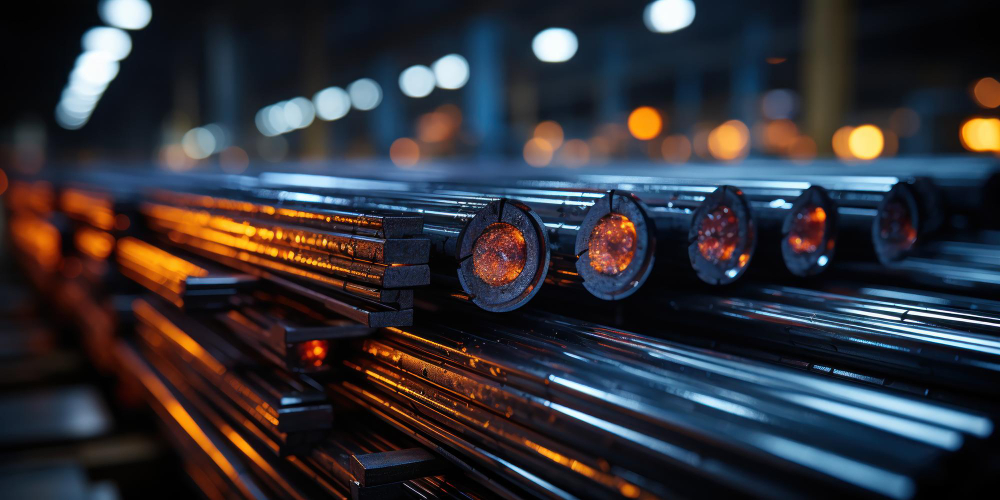This article dives into the fascinating world of metals, exploring their properties, structure, and how we can improve them through various techniques. Metals are the backbone of our civilization, forming the essential framework for everything from the cars we drive to the skyscrapers that pierce the sky. Understanding their characteristics is crucial for engineers, but also anyone with a curiosity about how the world around them is built.
The Essential Metals: Workhorses of Engineering
While the Periodic Table boasts around two-thirds elements classified as metals, only a select few reign supreme in the engineering realm. Here are some of the most important metals and their key qualities:
Iron:
The undisputed champion, iron forms the foundation of steel, a versatile material with countless applications in construction, machinery, and infrastructure.
Aluminum:
A lightweight champion, aluminum is prized for its strength-to-weight ratio. This makes it ideal for situations where weight reduction is crucial, such as in aircraft construction. Additionally, aluminum’s relatively low melting point and affordability make it a popular choice for casting and various manufacturing processes.
Titanium:
Even stronger than aluminum, titanium becomes the metal of choice for demanding aerospace applications. Its exceptional strength-to-weight ratio makes it perfect for lightweight yet incredibly strong components in airplanes and spacecraft. However, its high melting point and complex processing requirements make it a more expensive option.
Magnesium, Copper, and Nickel:
These metals play supporting but crucial roles in various engineering projects. Magnesium offers the lightest weight among all structural metals, making it valuable in weight-sensitive applications. Copper, with its excellent electrical conductivity, is essential for electrical wiring and components. Nickel finds its place in the production of stainless steel, known for its corrosion resistance.
Unveiling the Microscopic World: Metal’s Inner Structure
The key to using metals effectively lies in understanding their atomic structure. Unlike glass, with its random atomic arrangement, metals have a very organized and predictable structure called a crystalline lattice. Imagine a vast, repeating pattern of tiny building blocks – that’s essentially what a crystal lattice is. There are different ways these atoms can pack together, resulting in various lattice types. Several of the most prevalent ones encompass:
Face-centered cubic (FCC):
Copper atoms, for example, prefer this arrangement, where atoms are positioned at the corners and the center of each cube face in the lattice.
Body-centered cubic (BCC):
Iron atoms favor this structure, where atoms occupy the corners and the center of a cube, with an additional atom in the middle of the cube.
Hexagonal close-packed (HCP):
This structure, favored by titanium atoms, involves a hexagonal arrangement that efficiently packs the atoms together.
These close-packed arrangements contribute to the high density of metals compared to other materials. However, real metals aren’t perfect. Their lattices contain imperfections called defects, which can be point defects (like vacancies or misplaced atoms) or linear defects (dislocations) that disrupt the atomic order.
The Dislocation Dance: How Metals Bend and Deform
Dislocations are like tiny kinks or bumps in the otherwise orderly atomic arrangement. They play a crucial role in how metals deform. When a stress is applied to a metal, these dislocations can move through the lattice, allowing the metal to bend or stretch permanently (plastic deformation). This movement is irreversible, unlike elastic deformation, where the material returns to its original shape when the stress is removed.
The density of dislocations within a metal significantly affects its strength. More dislocations mean a stronger material because they get tangled up, hindering their movement and making it harder for the metal to deform. Additionally, the way atoms pack together in the crystal lattice influences how easily dislocations can move. In structures where atoms are closer packed, like FCC, dislocations have an easier path to glide, affecting the material’s overall strength and ductility.
From Molten Metal to Grains: The Birth of a Polycrystalline Structure
Imagine molten metal slowly cooling down. As it loses heat, atoms start to group together and form the crystal lattice structure. However, these lattices don’t all have the same orientation. As the metal solidifies, these misaligned lattices create boundaries between them, resulting in a grainy structure. This is called a polycrystalline material. The presence of these grains and their boundaries strengthens the metal compared to a single, perfect crystal. The smaller the grain size, the stronger the material, as captured in the Hall-Petch equation. This principle is why manufacturers employ various techniques to control grain size during solidification, influencing the final properties of the metal.
Building Muscle: Techniques to Strengthen Metals
There are several ways to enhance the strength of metals, making them even more versatile for engineering applications:
Grain Boundary Strengthening:
Techniques like controlling the cooling rate or adding specific elements (inoculants) can influence the size of grains formed during solidification, impacting the material’s strength. Faster cooling typically results in a finer grain structure, leading to a stronger final product. This approach relies on the principle that grain boundaries hinder the movement of dislocations, making it harder for the metal to deform.
Work Hardening:
This technique involves plastically deforming the metal through processes like cold rolling or forging. By introducing more dislocations into the crystal lattice, work hardening increases the material’s strength. However, this comes at the cost of reduced ductility (the ability to bend or deform without breaking).
Alloying:
One of the most impactful methods for improving metal properties is alloying. This involves combining a base metal with other elements, metallic or non-metallic, to create a new material with enhanced characteristics. Alloys are broadly categorized as ferrous (iron-based) or non-ferrous (without iron). Here are some examples:
Brass: A non-ferrous alloy of copper and zinc, known for its attractive appearance and ease of machining.
Aluminum Alloys: These alloys offer a good balance of strength, weight, and affordability. Common alloying elements include copper, manganese, silicon, zinc, and magnesium. Depending on their purpose (casting or working), aluminum alloys are designated using specific numbering systems.
Steel: Arguably the most important engineering alloy, steel is made by combining iron with small amounts of carbon (and sometimes other elements) to achieve a range of desirable properties.
Solid Solution Strengthening:
When alloying elements dissolve within the base metal’s crystal lattice, they distort the structure, hindering dislocation movement and strengthening the material. Steel, where carbon atoms occupy interstitial spaces in the iron lattice, is an example of solid solution strengthening.
Precipitation Hardening:
This technique involves heat treatment to create a fine dispersion of particles within the metal’s microstructure. These particles act as obstacles to dislocation movement, leading to increased strength.
Understanding these different strengthening mechanisms allows engineers to tailor the properties of metals to specific applications.
Unveiling the Secrets: Phase Diagrams and Heat Treatment
Iron and carbon form a particularly interesting system, with their properties changing dramatically depending on temperature and carbon content. This complex relationship is captured in a phase diagram, a visual representation of the different solid phases (microstructures) that can exist in an alloy at various temperatures and compositions.
For instance, pure iron transforms between different crystal structures (BCC and FCC) at specific temperatures. The addition of carbon introduces a new phase called cementite, a hard and brittle compound. The relative proportions of these phases (ferrite, austenite, and cementite) in the final microstructure depend on the carbon content and the cooling rate. This knowledge of phases allows engineers to utilize heat treatment processes like quenching and tempering to manipulate the microstructure and achieve desired properties in steel.
Conclusion:
Metals are the backbone of our civilization, shaping our world from towering structures to intricate electronic devices. By understanding their structure, properties, and how we can improve them through various techniques, we can unlock their full potential and continue to build a stronger and more innovative future.


